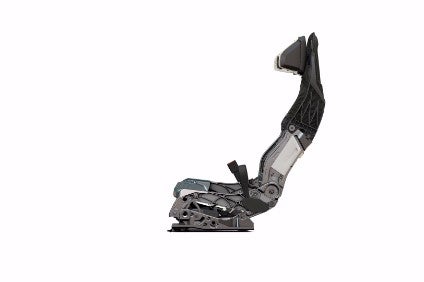
ZF and its partner Faurecia have unveiled the initial results of their collaboration, following the introduction of their new seat concept during IAA 2017.
The goal of the cooperation between ZF and Faurecia is ‘Cockpit 2025,’ which will help support the transition from assisted and automated driving to fully autonomous driving at Levels 3, 4 and higher.
When ZF and Faurecia announced their cooperation in May 2017, the networked ecosystems from Silicon Valley served as a model. The jointly developed seat concept demonstrates how passive safety can be designed for the transition phase from assisted to automated driving.
The seat supports three different driver positions: the driving position itself, a relaxed position and a working position in which the seat is turned slightly toward the middle of the cabin. It can be tilted a total of 25 degrees backwards and up to ten degrees towards the interior.
To achieve these positions, the back of the seat is divided into two parts. The attachment point of the driver’s seat belt is integrated into the seat and is designed to help meet changing conditions in the event of a crash.
When transitioning between positions, the variable belt connection point near the shoulder can automatically adapt to the position of the reclined driver. ZF’s Active Control Retractor ACR 8 system can additionally send haptic signals to the driver whereby vibrations can redirect the driver’s attention to what is happening on the road.

US Tariffs are shifting - will you react or anticipate?
Don’t let policy changes catch you off guard. Stay proactive with real-time data and expert analysis.
By GlobalDataThe belt system can therefore also be integrated into the vehicle’s Human Machine Interface (HMI) which is important for assistance systems and automated driving functions where the driver is informed to retake control of the vehicle.
ZF has also developed and installed new side airbags: The ZF Advanced Far Side Airbag has been integrated into the seat in addition to a standard side airbag on the outside. It can help to protect the driver’s head and neck in case of a crash, especially if the impact is on the far side of the driver.
An airbag integrated into the back of the driver’s seat helps to protect passengers in the back seat.
“We have been able to introduce an initial prototype just four months after starting our collaboration,” said Torsten Gollewski, responsible for Advanced Engineering at ZF. “The fact our two companies were able to bring together their respective areas of expertise in such a short period of time is also a strong signal for the long-term direction of our cooperation.”
For his part, Faurecia VP Cockpit of the Future project, David Degrange added: “It took only four months – revealing the common approach and culture between the two groups to build this safety cocoon concept. A speed record in the automotive industry and once again a demonstration of the shared commitment to propose added value technology to our customers.”
The new seat concept was able to be realised as both ZF and Faurecia established a common understanding of integrated safety, and as a result have developed medium and long-term goals – in addition to the first specific concept seat.
The partners have defined several action areas, namely, comfort and safety functions which affect the seat and the vehicle chassis; cockpit elements such as the display, steering wheel and passenger protection. Other action fields include interior monitoring and the interaction between systems in the critical pre-crash phase in order to help increase occupant protection in the last milliseconds when a crash is unavoidable.
“These action areas cover a wide spectrum of the requirements of current and future driving functions, but especially automated and fully autonomous driving functions,” said Gollewski.
“All of these elements are heavily dependent on one another, which is why a shared systems approach between ZF and Faurecia will help create better solutions for future occupant safety than a stand-alone approach.”
48.5m
Global volumes of powered front seats fitted to light vehicles annually, 2020 forecast




